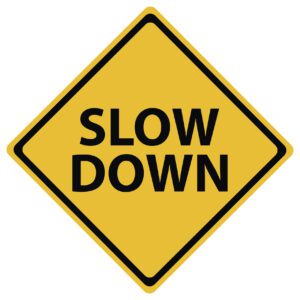This past Sunday morning, someone was in a hurry. On I-70 in Kansas City, a driver sped in and out of east bound traffic until he struck the rear end of another vehicle, lost control, was thrown out, and died. We will probably never know what was so pressing or what malady he may have had that caused his death. I do know that I have witnessed ten times more of that kind of weaving back and forth across three lanes in the past couple of years than ever before.
In our financial lives, wrecks are usually not as dramatic or sudden. But I want to focus your attention on what it most often requires for a person or couple to be successful in reaching their financial goals. I am not referring to billionaire status—just being able to raise a family, have a comfortable life that is far more prosperous than that of three-fourths of the world’s people, and leave something behind for one’s family and favorite causes.
I had already witnessed this phenomenon in my career, but the 1996 book, The Millionaire Next Door, by Thomas Stanley and William Danko, brought the concepts to national attention in a great way. They noted that decades ago when a million was still a lot of money (tongue in cheek), most US millionaires were living in middle class, blue collar neighborhoods rather than being professionals in medical scrubs or white collared shirts.
They found that earned income was not a primary indicator of present or future wealth, but percentage of income saved is. The authors used an example of someone who smoked three packs of cigarettes a day for 46 years, say from 19 to 65. If that person invested just the cost of the tobacco for 46 years, they would accumulate an investment portfolio of $2M. And that was using very old costs, peanuts compared to what a pack runs today.
How best can one save money? My answer is to forget about impressing anyone by your stuff. I learned some of these lessons the hard way. When I was in my early 30’s, we had three children in four years, Lee Iacocca the genius automotive man, brought out the mini-van. We needed one!
There were no used ones since they were totally new so we paid $20,000 in about 1985 for our first, paying for it over $500 a month for 48 months as I recall. Karen liked it, but after a couple of those, and building an impressive new house in the Cliffs, I was up to my eyeballs in debt. I became a consummate juggler until I came to my senses, traded down in homes, bought good used cars, and realized that your family and friends either like you for who you are or they will not. Now we have an old mini-van, an old truck, and an old convertible.
The other primary way to financial margin and peace is through patience. If you will spend 5% of your income on life and disability income insurance, give at least 10% to your church and favorite charities, save up at least $5,000 for emergencies, and grow up to 10-15% into long term investments, in a few decades you will be rich. Again, rich is defined in comparison to your needs and almost all the rest of the earth’s 8 billion fellow inhabitants.
Do not get into a hurry. Many do and pay too big a price for a big risk, sometimes going into a business too soon or without the necessary skills and support they need. Ask anyone 65 or older how long it took to attain that age—it is very short in the rear-view mirror and many will say, too soon old, and too late smart! Please share this one with a young person or two.
(Past performance is no guarantee of future results. The advice is general in nature and not intended for specific situations)

